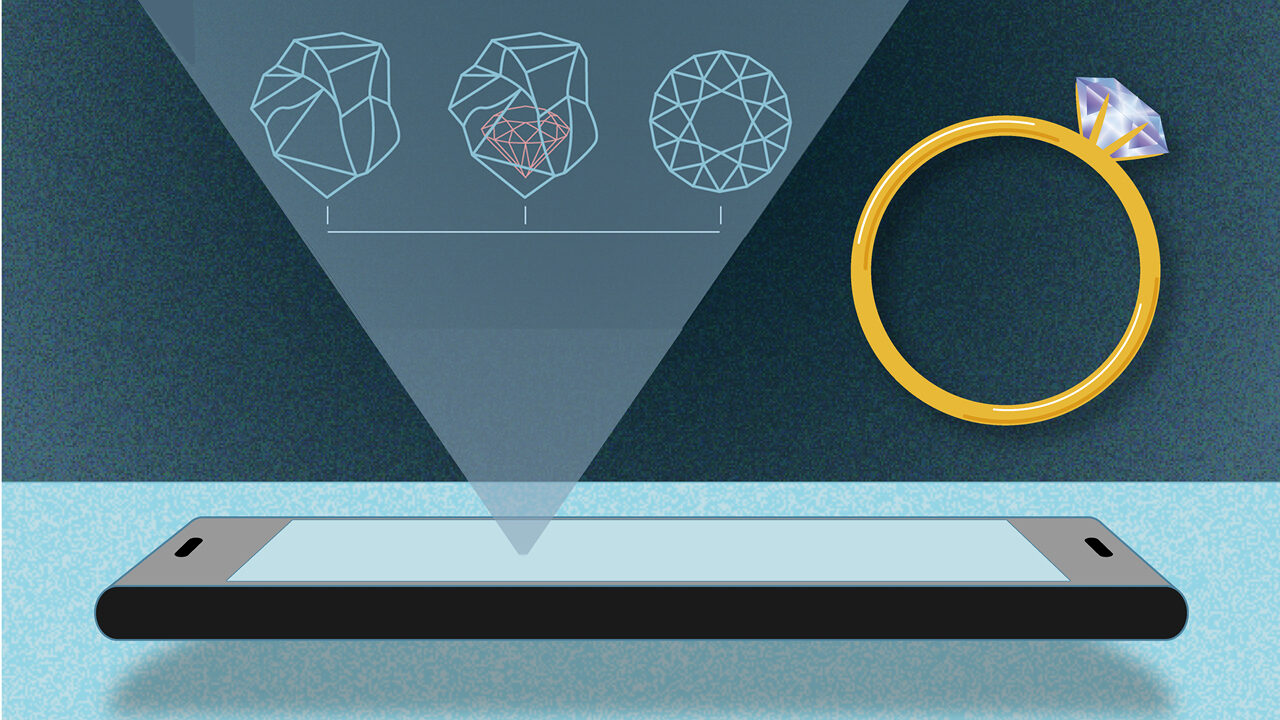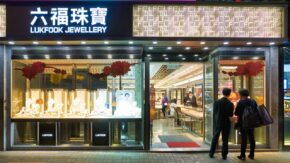Significant new technologies offer transparent and reliable ways to share a diamond’s journey with consumers.
Referring to diamond traceability, Feriel Zerouki, senior vice-president of corporate affairs at De Beers Group, states, “End clients have shifted their expectations from ‘tell me’ to ‘show me’.” As she points out, it is no longer enough to spin a good yarn about sourcing and ethics; consumers want proof – a demand accelerated by the sanctions on Russian diamonds.
As Rajiv Mehta, director at diamond supplier Dimexon, puts it, “It’s literally like the weather. Is it raining or not? Is it ethical or not? There’s little to get away from.” The company was one of the early pioneers in diamond traceability, setting up a bespoke tracking system in 2006 with tech provider SAP. In July, it released an ESG (Environment Social Governance) report in which it pledged to deliver 100% traceability on diamonds of 0.18 carat and above by 2023 and on all mixed parcels of diamonds weighing less than 0.18 carat by 2025.
De Beers has hitched its wagon to blockchain technology, with its own Tracr solution. Launched at scale earlier this year, Tracr uses “a combination of blockchain, artificial intelligence, and pipeline integrity.” When it comes to communicating with consumers, De Beers relies on its Code of Origin serial numbers etched onto the table of diamonds of 0.3 carat and larger. Consumers can type in this code, which is printed on a card provided with purchase, to download a full report that not only provides information on the diamond’s journey, but also highlights the positive social and environmental impacts of purchasing the stone.
“An increasing share of end clients want to make sure that their diamond’s values match their own, so issues of provenance – not just where a diamond came from, but how it was recovered and how it has benefited people and the planet – are becoming more significant,” Zerouki explains.
Promoting the positives of mining, rather than just negating the negatives, could be an important marketing role that diamond-tracing technology could fulfil, suggests Howard Levine, managing director of diamond trading platform Diamnet. “This is a pivotal time for natural diamonds and the only opinion that really matters is that of the consumer,” he stresses. “Some mines have been extremely beneficial to the economy of the countries where they reside, creating schools and hospitals, and yet this remains the exclusive knowledge of those who do their research online. Why?” Levine also wonders if traceability that links back to exact mines could lead to price variance, with consumers willing to pay more for quality stones from low-yield mines due to rarity or sites known to operate to high ethical standards.
Strong tech-backed traceability could also offer consumers confidence when buying diamonds on the secondary market, reasons Sébastien Taupin, business development and partnership manager at Aura Blockchain Consortium, which was founded last year by LVMH, Prada and Cartier. “The supply chain will no longer be a hidden chain of events but directly linked to the product itself,” he affirms. “Customers
will be able to access their product history, verify the product authenticity, register for after-sales services such as repairs, and transfer their ownership [and therefore authenticity] in case they choose to sell their product.”
Louis Vuitton has been using Aura blockchain to shore up its diamond traceability promise to end consumers, with the launch of its LV Diamond Certificate in July. The certificate lists the diamond’s Four Cs credentials, as well as laying out a roadmap of the diamond’s journey from country of origin through all the workshops the stone passes through on its way to a store. The LV certificate is being issued for jewels set with a central diamond in its LV Diamonds collection that features its own bespoke diamond cut in
the shape of the brand’s signature monogram flower.
This year, Aura teamed up with gemology technology company Sarine Technologies to offer a solution specific to diamonds that combines Aura’s blockchain technology and Sarine’s capability to scan diamonds at various stages throughout the supply chain to ensure an authentic log. The process starts with a digital scan of the rough and then further scans the stone after every modification. Each scan is checked against the previous one in the chain to ensure that it is the same diamond, therefore offering retailers and consumers rock-solid traceability.
This information is then packaged into a report, which retailers can customize, that provides the end consumer visuals of the evolution of their diamond from rough to polished using engaging graphics. Consumers can also reverse check their diamond at any time by placing it – loose or mounted – into a Sarine scanner that will use the physical properties of the stone to connect to its unique report for proof of provenance.
“Trends like online purchasing, consumer demands to disclose diamond provenance, and diamond traceability, as well as having a richer in-store experience, are putting pressure on retailers,” observes David Block, chief executive of Sarine Technologies. “The Sarine Diamond Journey traceability solution displays the fascinating transformative story of a diamond, displaying, in an engaging visual manner, how it’s being transformed from a rough stone until the consumer receives a beautiful, polished gem.”
RELATED READING

Main image: Jorogers@phosphorart
Stay up to date by signing up for our diamond and jewelry industry news and analysis.




